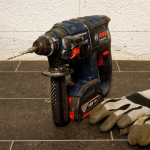Magnets and Micro Motors
Rare earth permanent magnets are commonly used to make electric motors. High-performance permanent magnets make it so the motor structure doesn’t require a special electrical excitation system. Ultimately, this means the motor has more power and efficiency, uses less energy, and is much smaller in size — in other words, a micro motor.
The need for miniature motors stems from a need for more value and better performance. Additionally, expanding nanotechnology and many portable electronics (including surgical tools) require lightweight motors that consume less power, last longer, and have lower electromagnetic interference.
Uses of Micro Motors
A lot of applications require a micro motor. These include:- Tablets and other portable computers
- Cellphones
- Bluetooth earphones
- LED lighting
- Portable medical devices and surgical power tools
- Other portable hand tools (including the alert functions)
- Vibratory cooling modules
- Portable razors
- Portable massaging tools
- Wearable health monitors
- Clocks and watches
Three Magnets Used to Create Micro Motors
Different motors, including the permanent magnet motor, AC motor, DC motor, linear motor, and brushless motor, can use the following magnet shapes: tiles, rings, and trapezoids. In addition to magnet shape and configuration, there are three types of magnets used to make motors, including micro motors. These magnets include:- Neodymium magnets: these magnets can be small, lightweight, and have a high power and speed/component ratio. Ultimately, this saves electricity. As a family of magnets, neodymium continues to show the fastest development of permanent magnets, making up about a quarter of the worldwide market. They’re notably used in spindle and stepper motors, and motors for floppy disk drives, fax machines, printers, and cameras.
- Samarium cobalt: these commercially significant magnets have a high temperature resistance. The maximum operating temperatures are between 300 °C, with Curie temperatures ranging from between 700 to 800 °C. In addition, samarium-cobalt magnets are also very corrosion resistant. The discovery of this magnet in the 60s made it possible to obtain intense magnetic energy in low volumes. They are often used in mini motors for audiovisuals and earphones.
- Ferrite (ceramic): compared to rare earth magnets, ferrite or ceramic magnets have low energy; however, they are resistant to demagnetization and corrosion. They’re also generally much cheaper than rare earth magnets. You’ll commonly find this kind of magnet in a DC electric motor.

